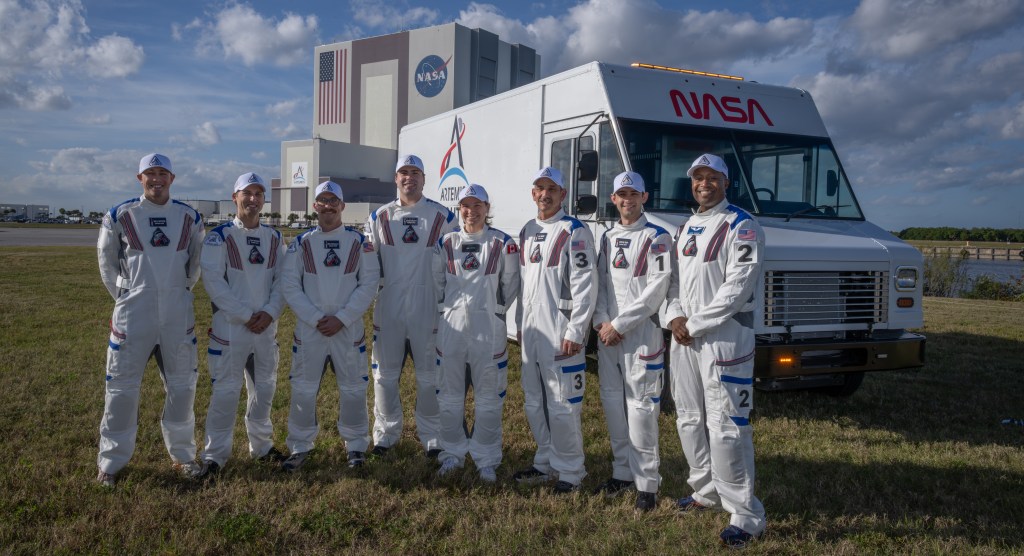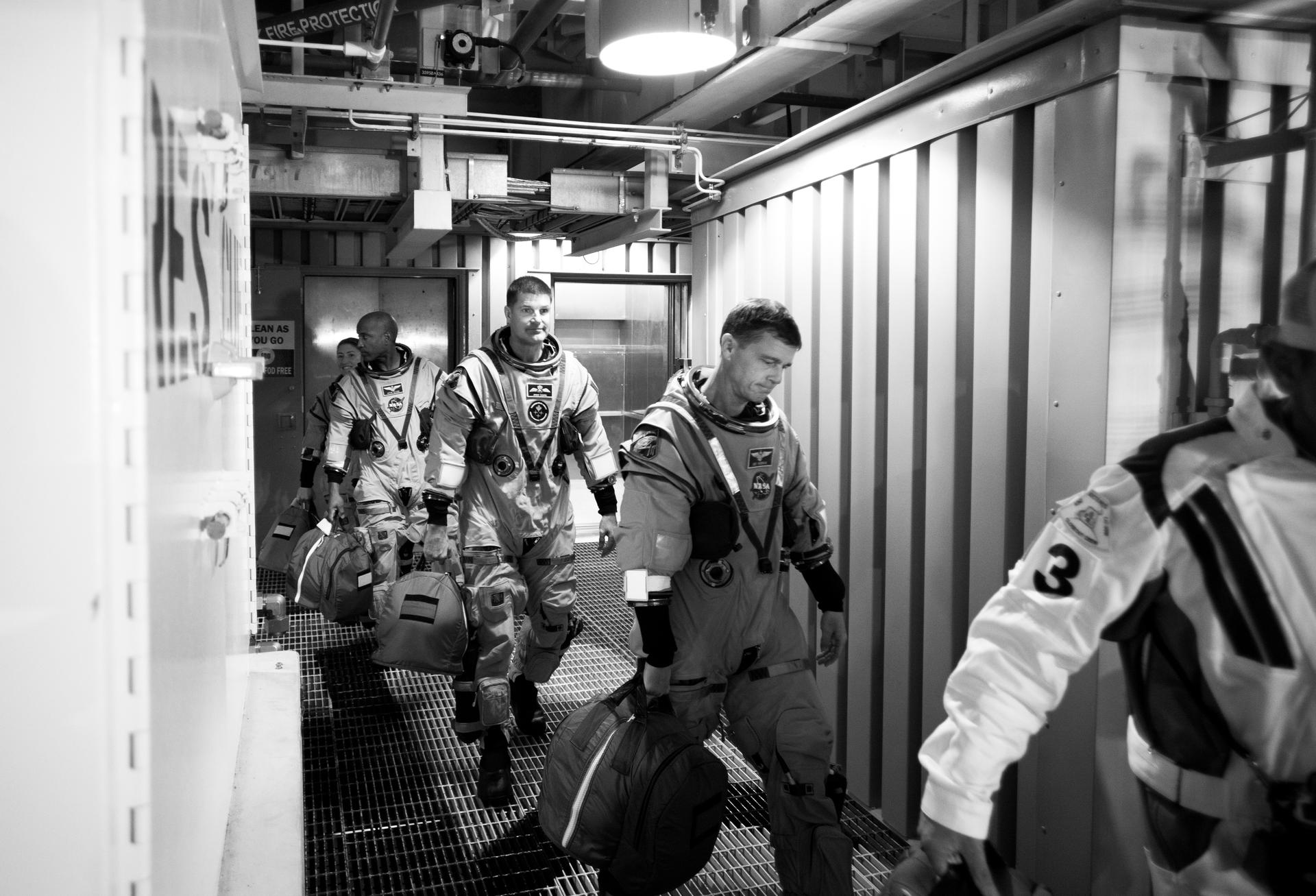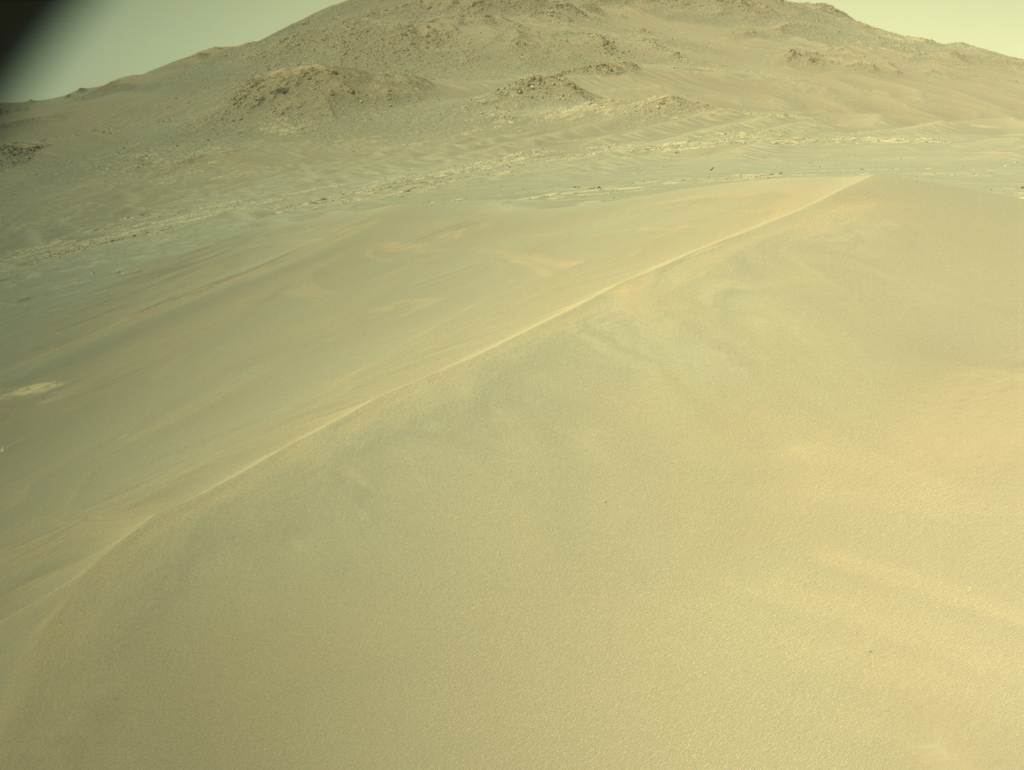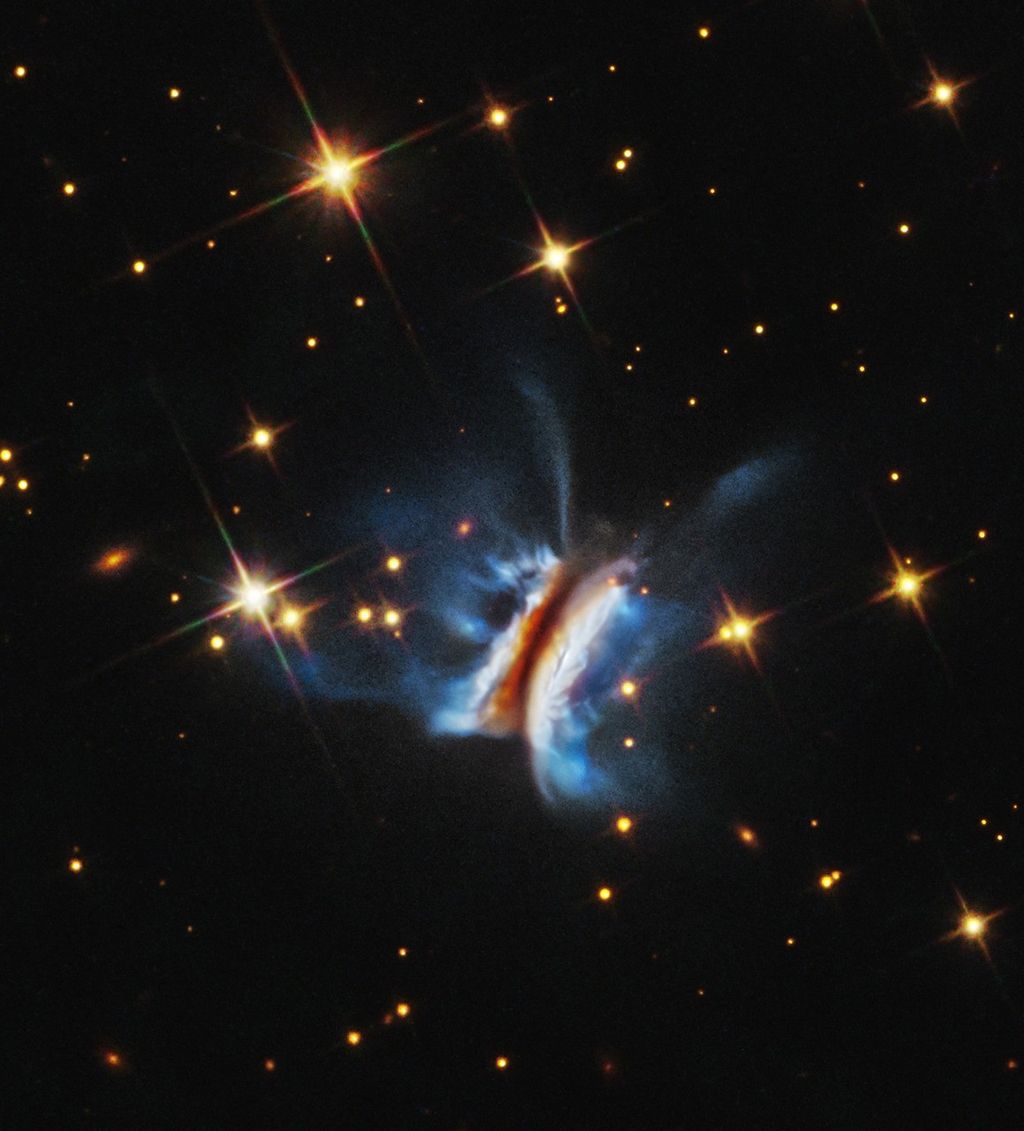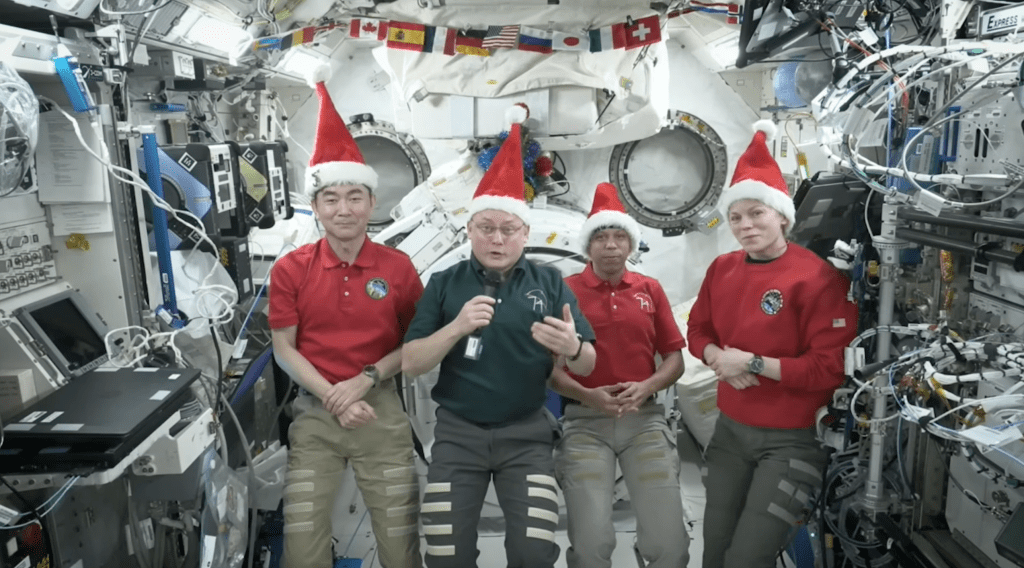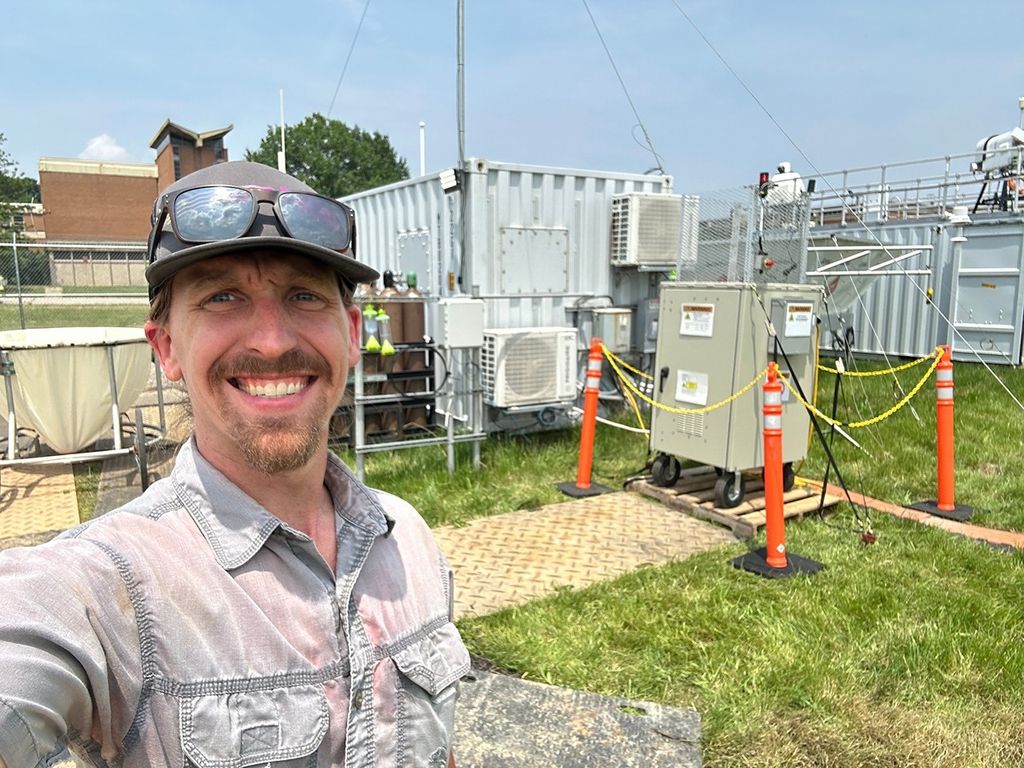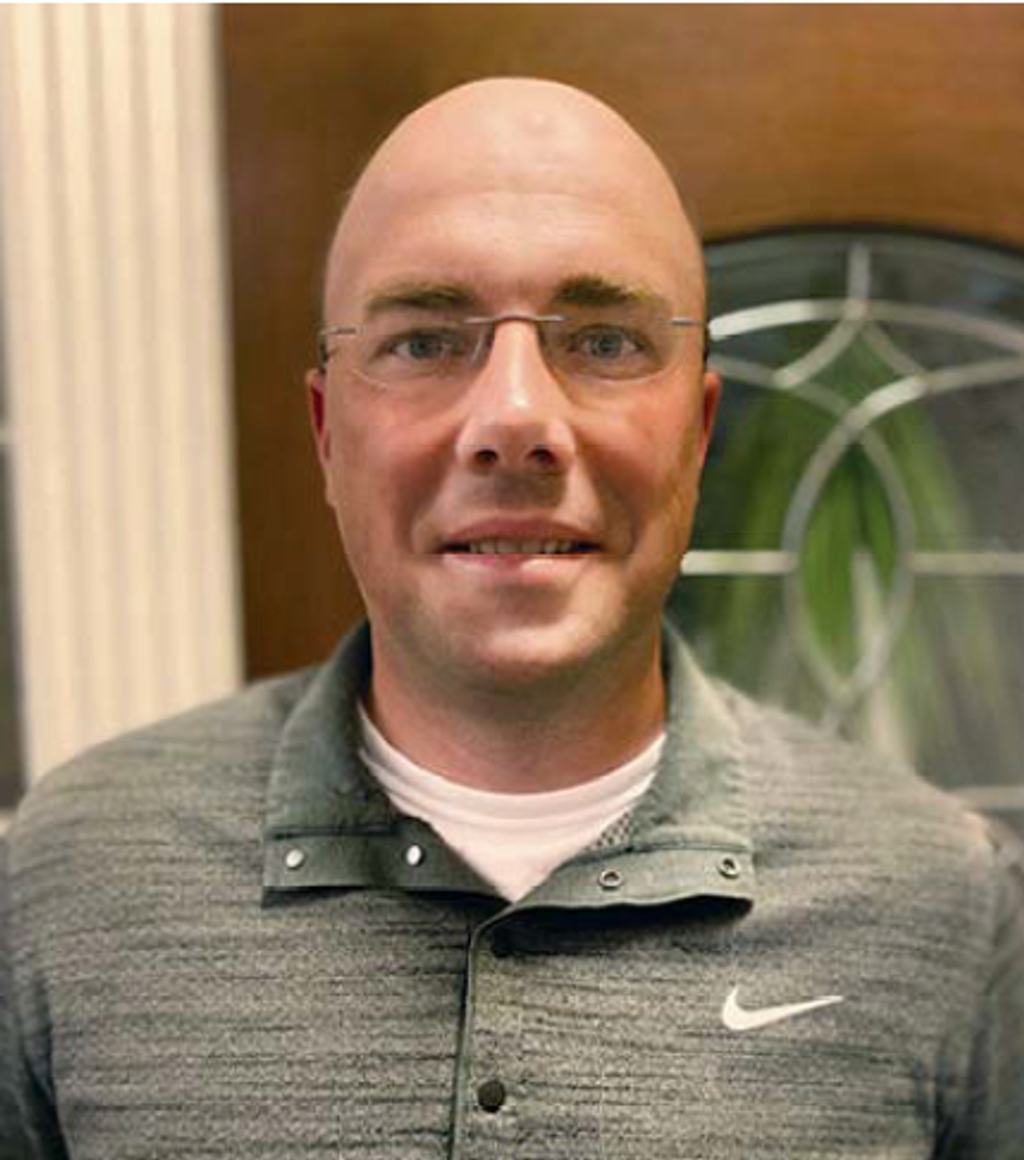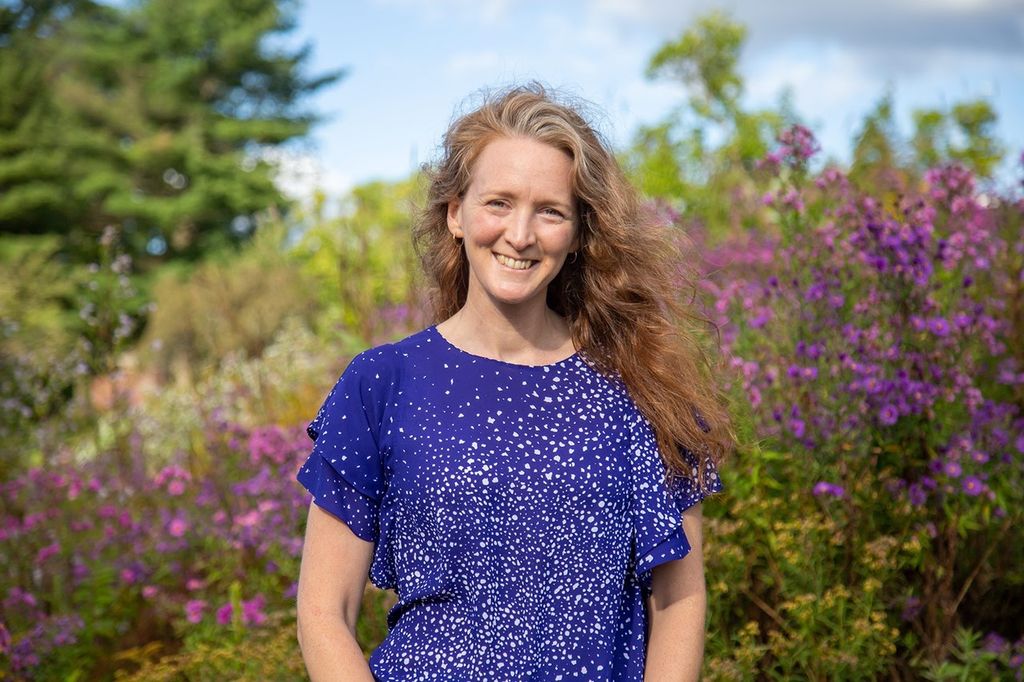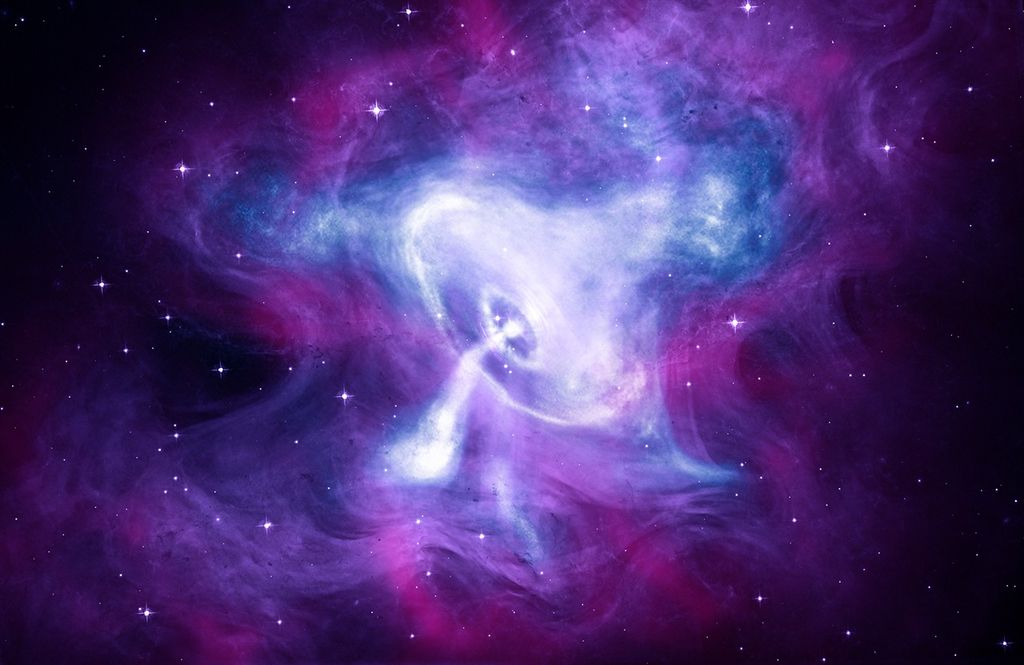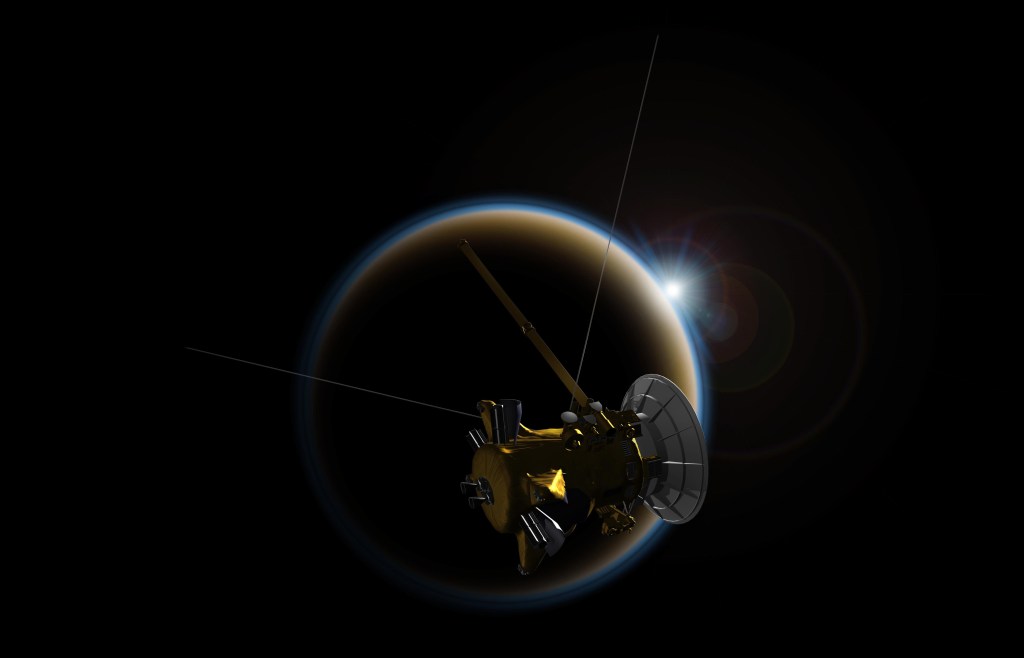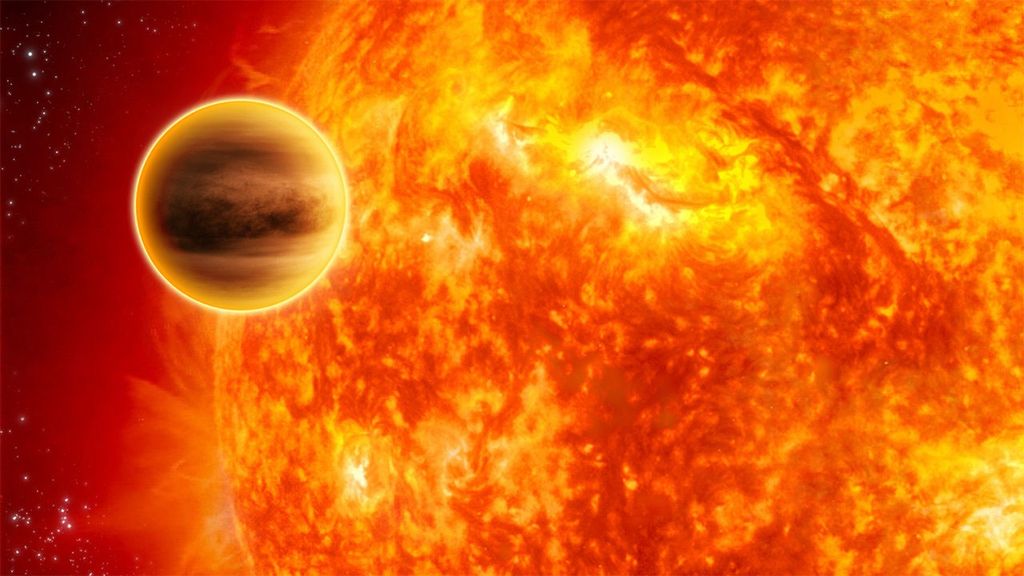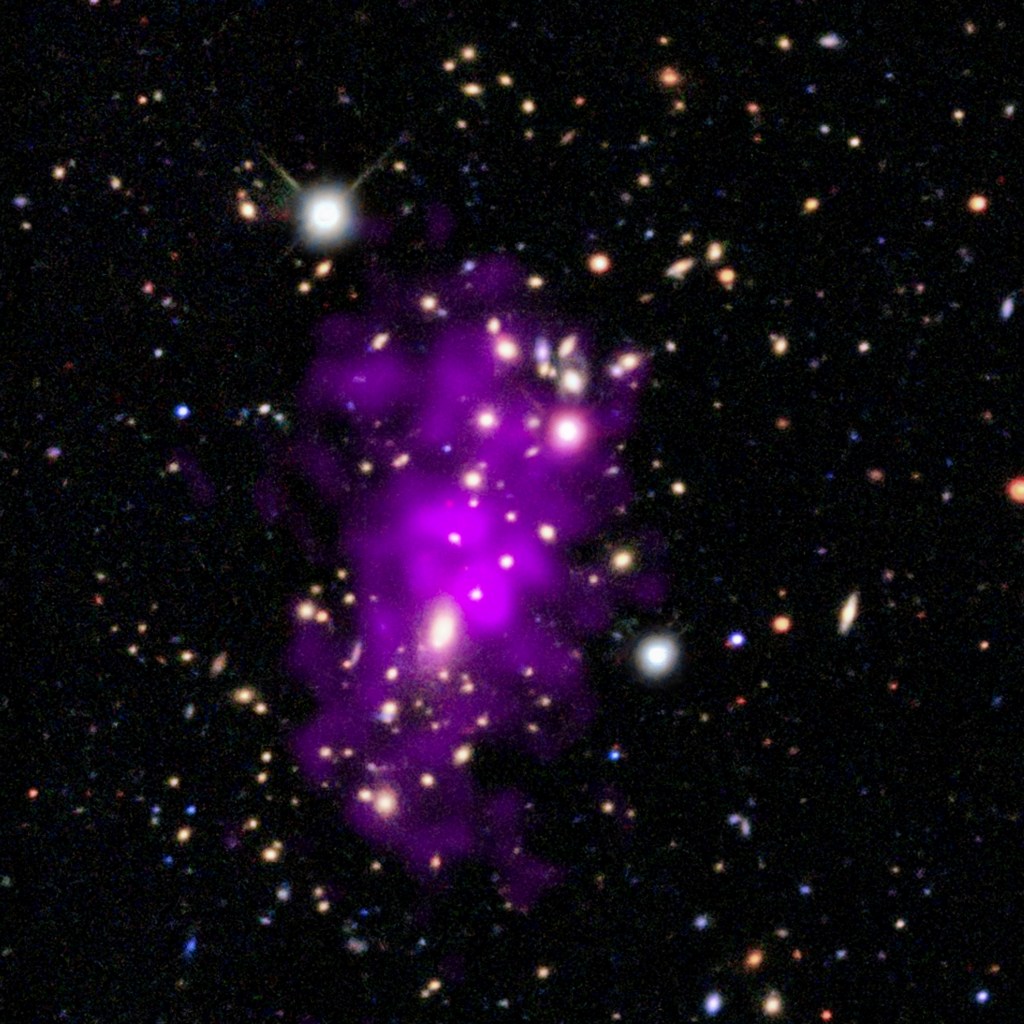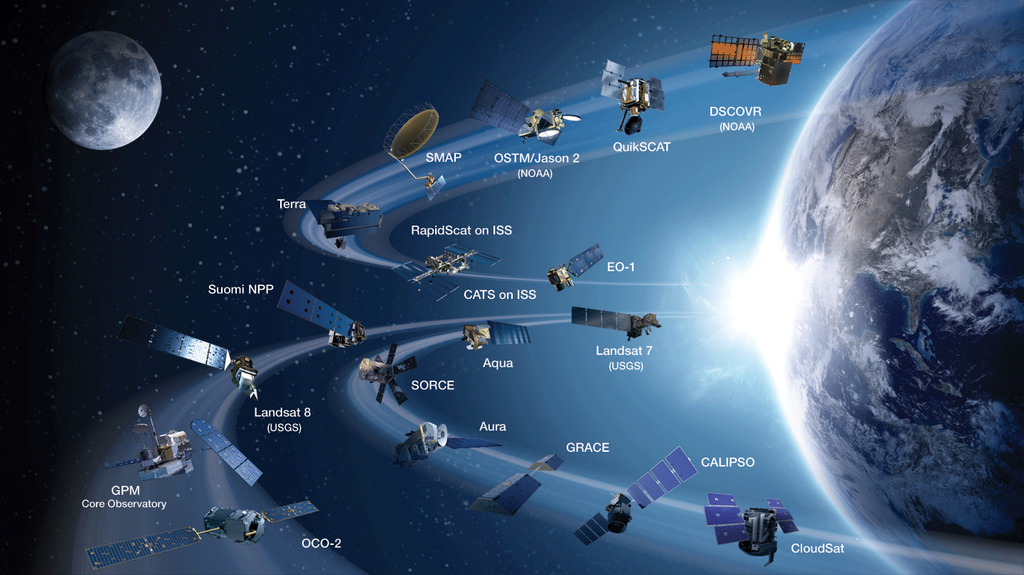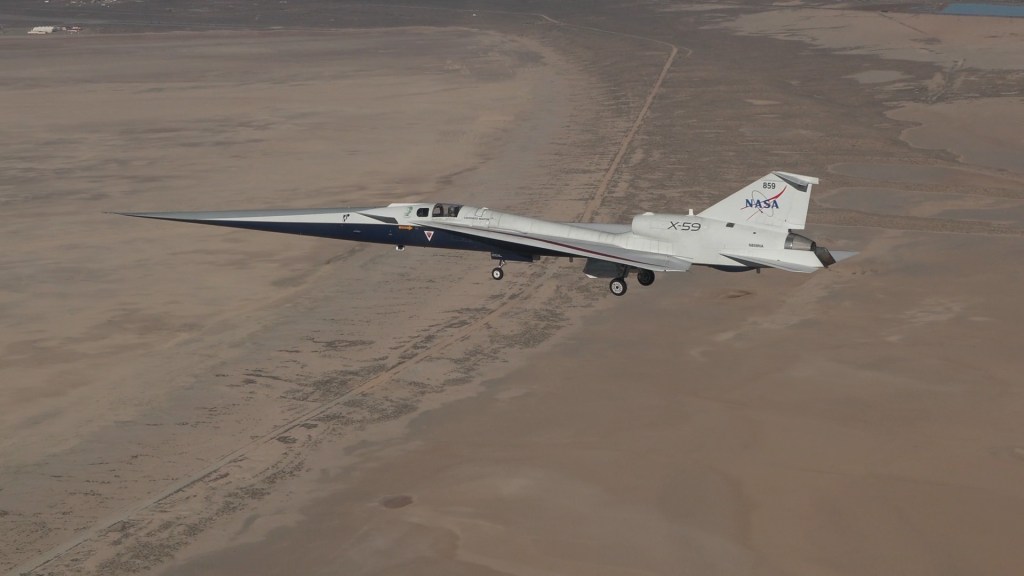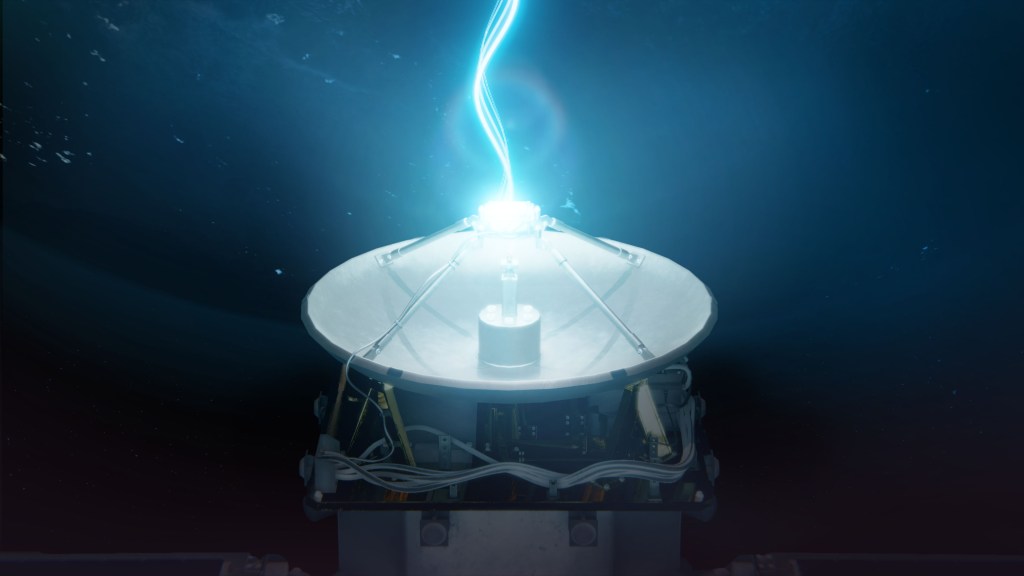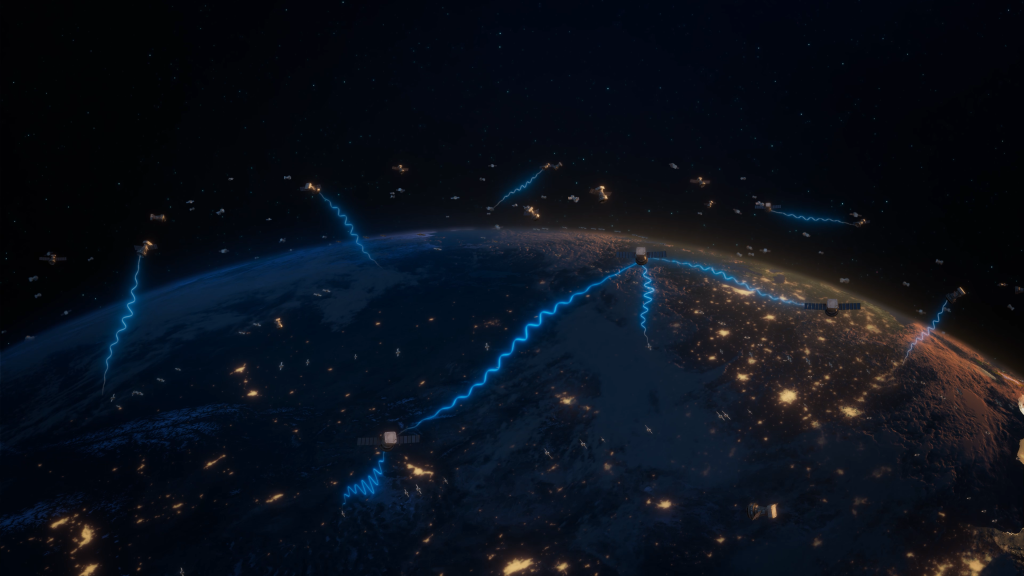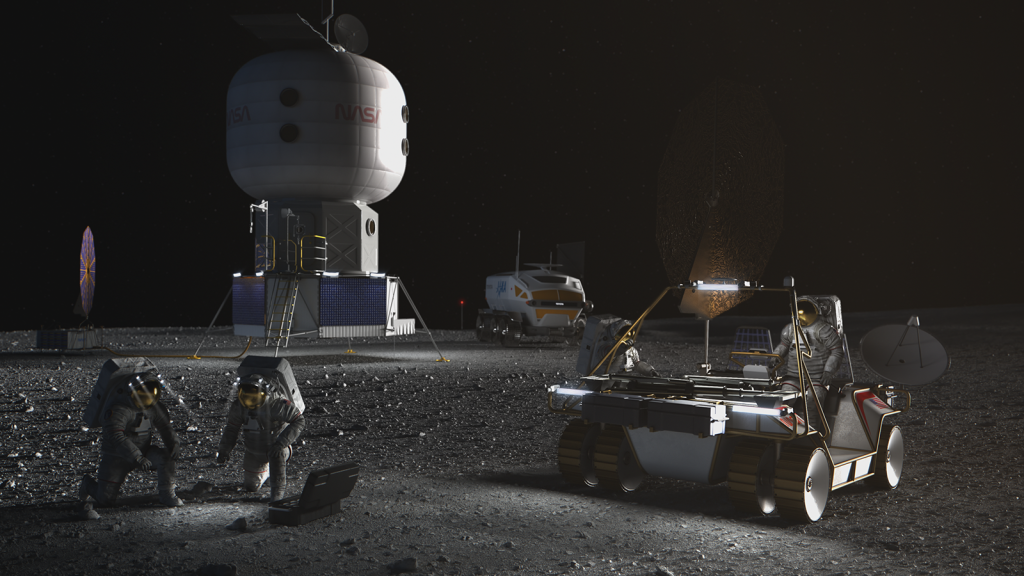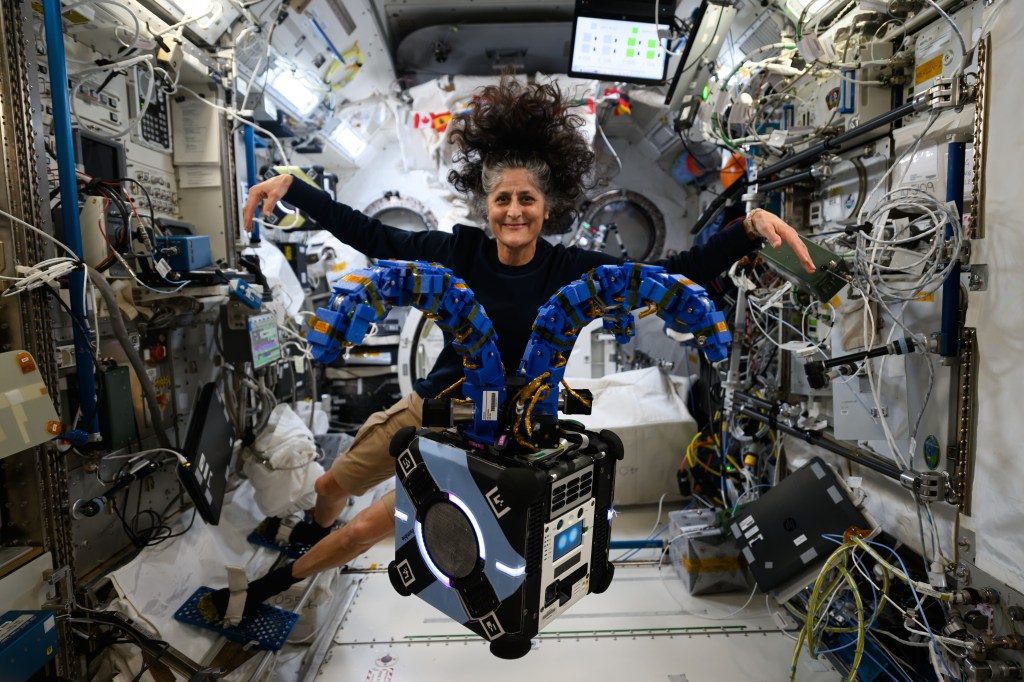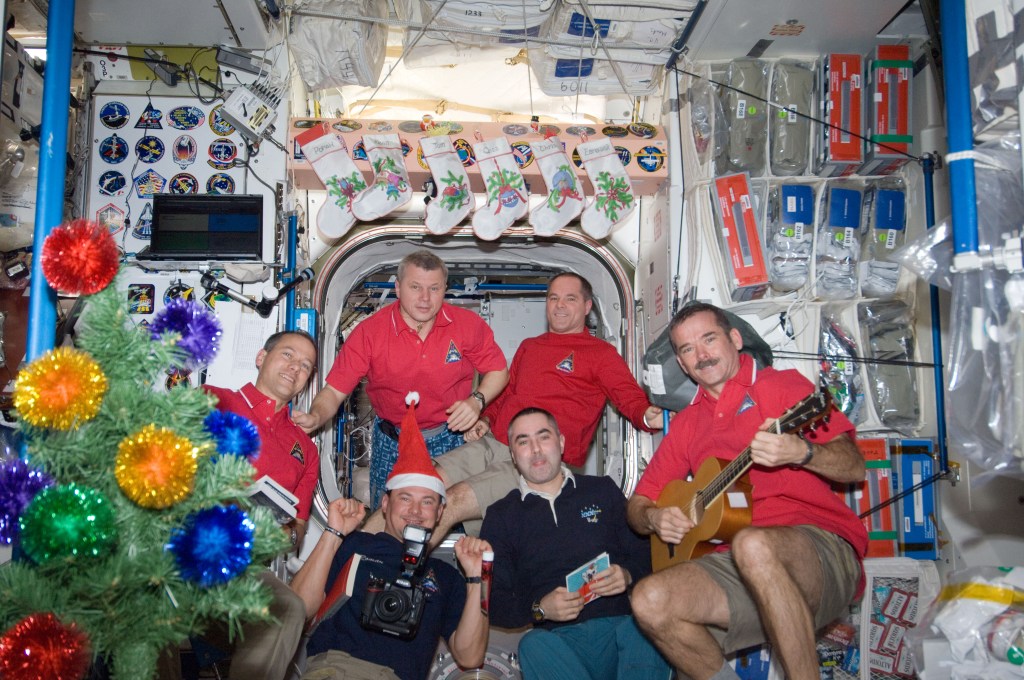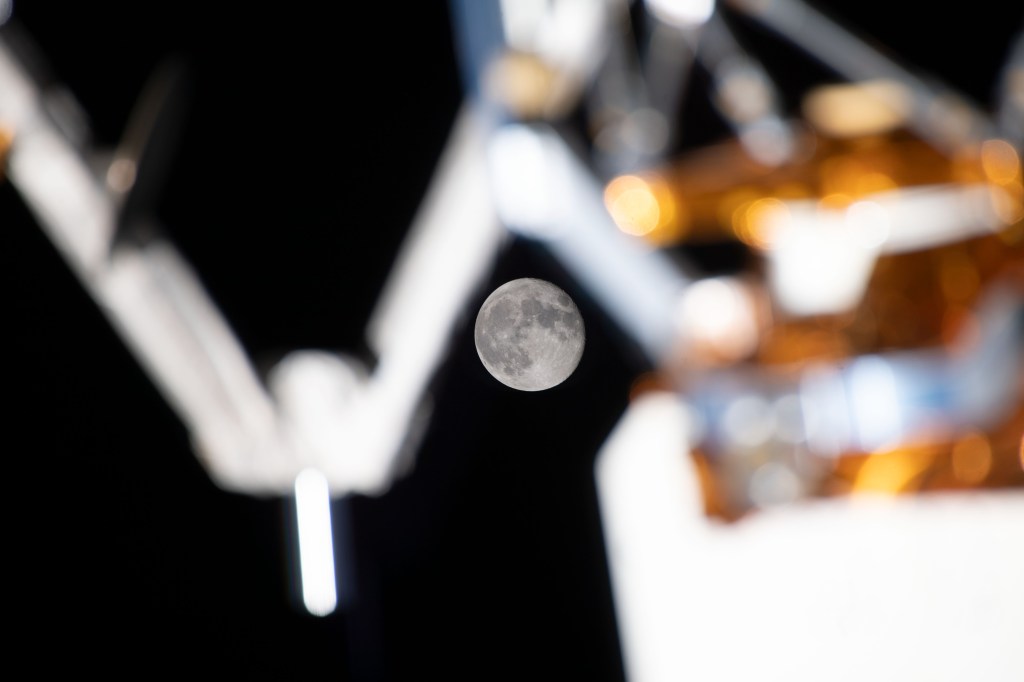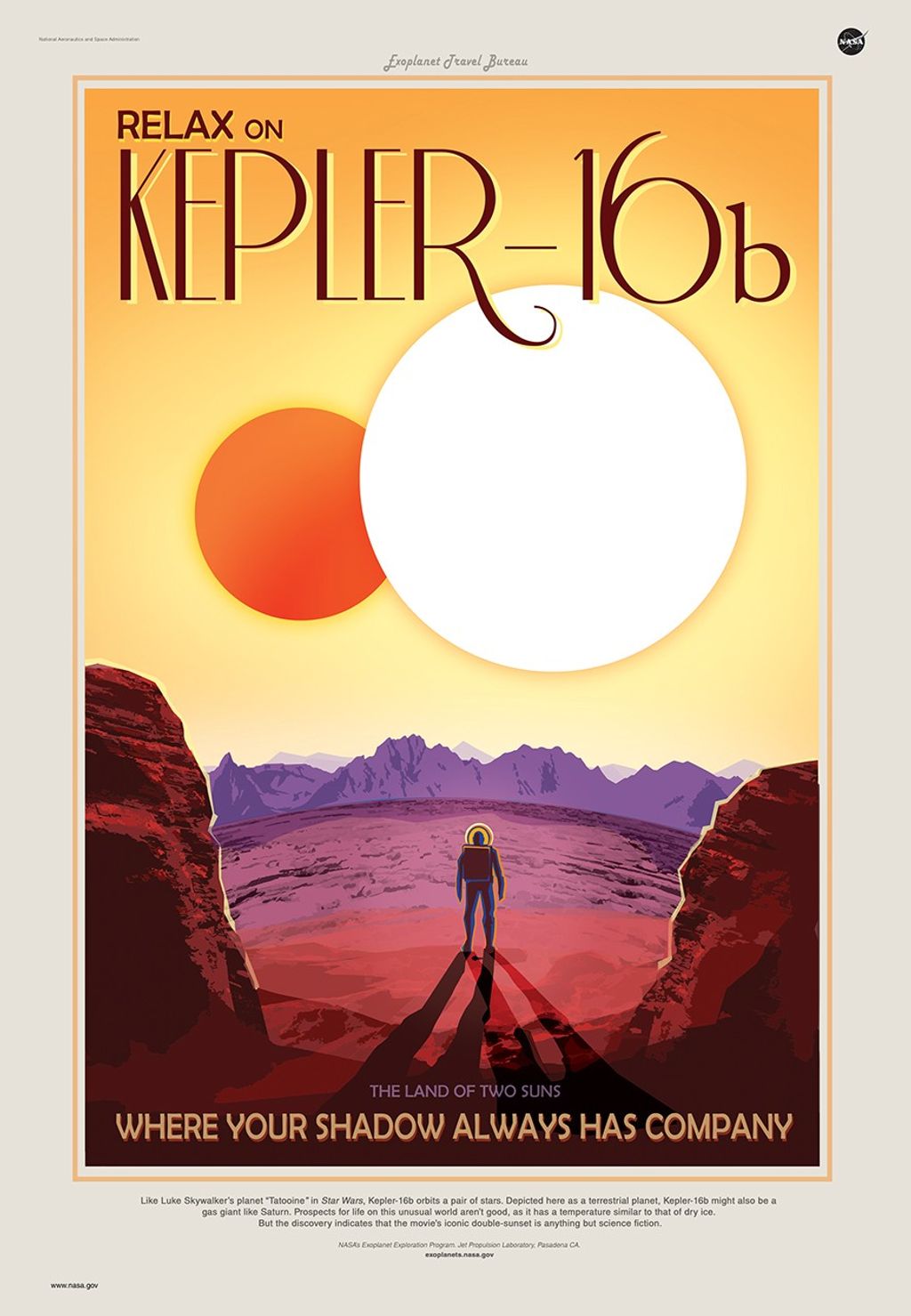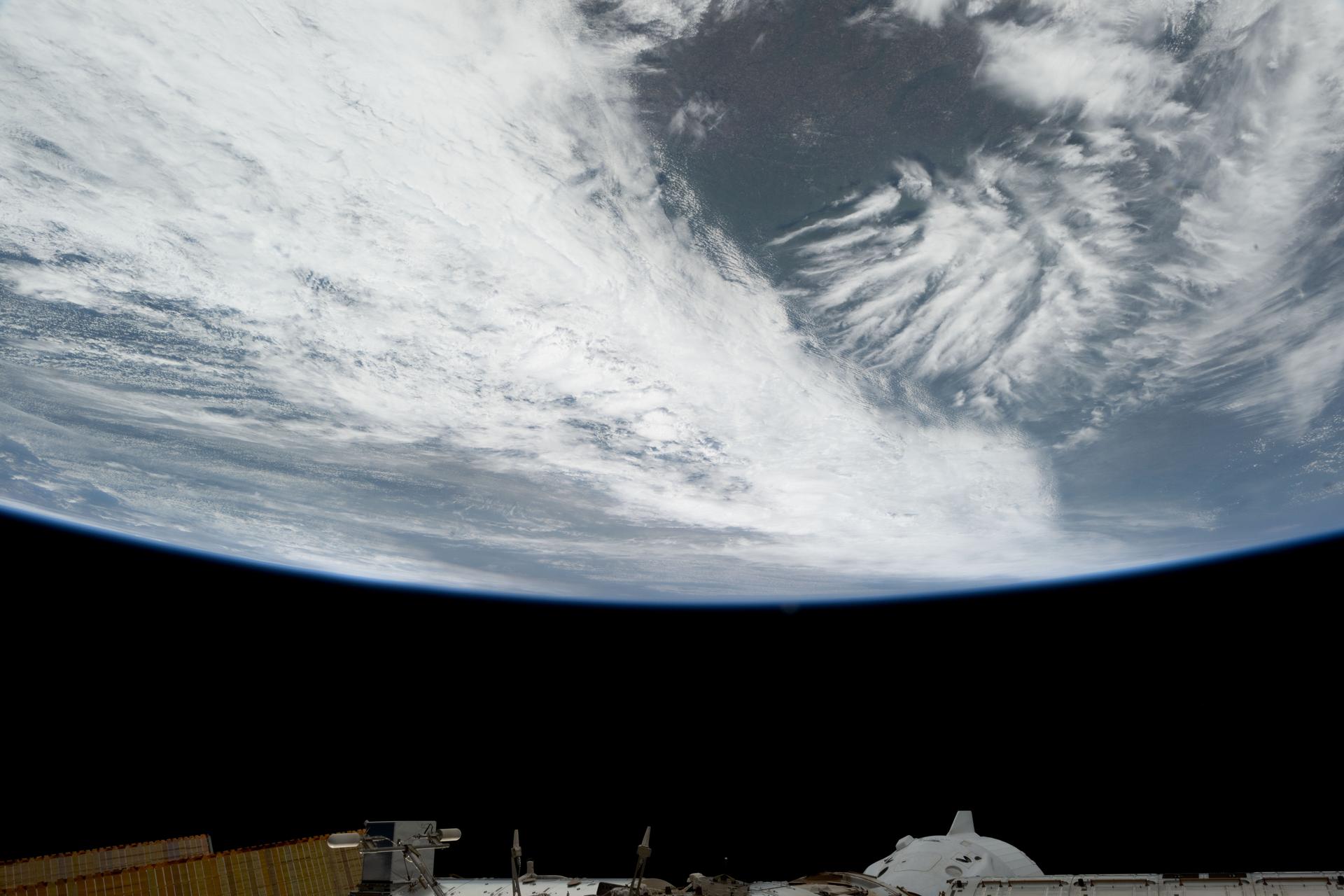

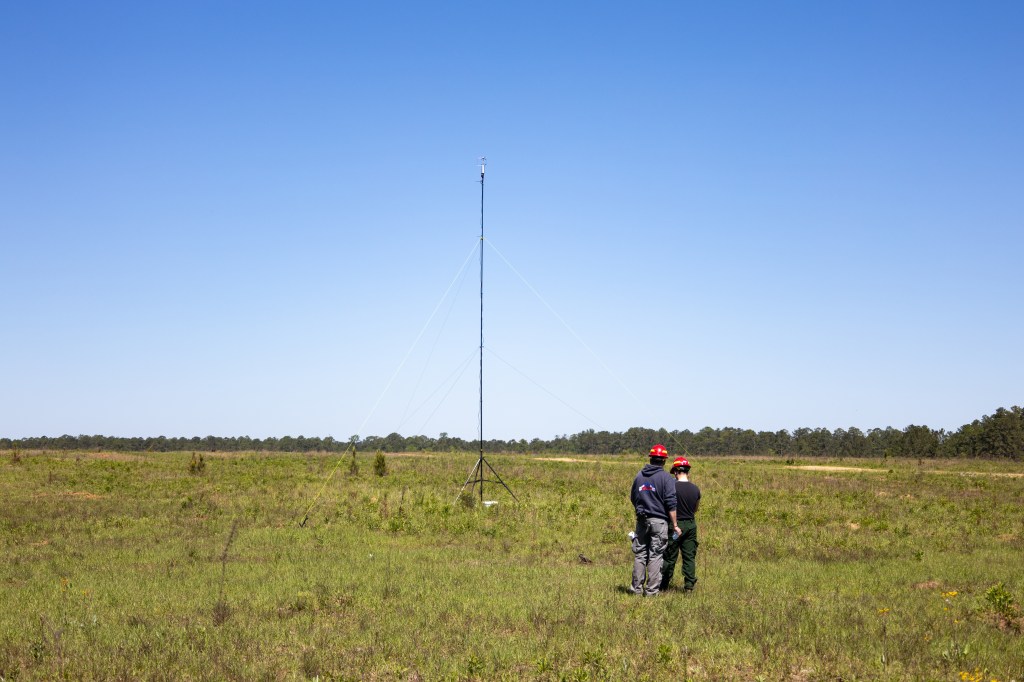
2023 Ames Earth Science Highlights
January 2023
| January 4 |
| The Ames Earth Science Division welcomes Dr. Jessica McCarty as new permanent branch chief, Biospheric Science Branch, as of 3 January 2023. Dr. McCarty comes to Ames with significant leadership experience in the research, applications, and policy arena, covering a wide range of topics including wildland and human-caused fires, fire emissions, agriculture and food security, and land-cover/land-use change. Before joining Ames, she was a professor at Miami University (Ohio) and continues to serve as a co-Associate Program Manager for the SMD-ESD Wildfire Applications Program. |
| Ames Earth Science Division members are attending and presenting at the 103rd American Meteorological Society’s meeting in Denver, CO next week. |
| January 11 |
| IMPACTS: Investigation of Microphysics and Precipitation for Atlantic Coast-Threatening Snowstorms, EVS-3 investigation, managed by ESPO. Instruments integration and test flights have been successfully completed. ESPO is on-site at NASA WFF and Dobbins AB managing the field deployments. The daily (weather dependent) science flight operations are scheduled to start on January 6. (espo.nasa.gov/impacts) |
| January 18 |
| NASA-USGS meetings on OpenET were held on 13 December 2022, to discuss current challenges and joint actions each agency could talk to facilitate the successful transition of OpenET to an operational, national program for satellite mapping of evapotranspiration and consumptive water use. |
| Amber McCullum, Juan Torres-Perez, and Britnay Beaudry are co-leading the upcoming ARSET Training “Connecting Citizen Science with Remote Sensing”, held virtually on 24, 26, and 31 January, 2023. |
| January 25 |
| As NASA prepares for the 2023 Year of Open Science, we are pleased to announce the open-source software release of Ziggy, a generalized, open-source science data processing software that has been developed to reduce risk and cost on cost-constrained flight missions. Ziggy is available through NASA’s github at https://github.com/nasa/ziggy |
| IMPACTS: Investigation of Microphysics and Precipitation for Atlantic Coast-Threatening Snowstorms, EVS-3 investigation, managed by ESPO. ESPO is currently supporting the IMPACTS deployment at NASA Wallops and at Dobbins Air Reserve Base where the aircraft and science teams for the P-3 and ER-2 are located. To date, the project has completed two successful fully coordinated science missions in the Northeast Coast region, and several test and calibration flights. (espo.nasa.gov/impacts). |
February 2023
| February 1 |
| Kate Duffy is a co-author on a study published in NATURE COMMUNICATIONS, “Explainable deep learning for insights in El Niño and river flows”. Dr. Duffy Kate was a NEX-funded Pathways student and received operational and intellectual support for this study from the NEX team. https://www.nature.com/articles/s41467-023-35968-5 |
| The IMPACTS: Investigation of Microphysics and Precipitation for Atlantic Coast-Threatening Snowstorms, EVS-3 investigation, managed by ESPO, continues to successfully fly coordinated science flights between the P-3 base at NASA WFF and the ER-2 based at Dobbins Air Reserve Base. |
| February 8 |
| The ESPO-managed EVS-3 Investigation of Microphysics and Precipitation for Atlantic Coast-Threatening Snowstorms (IMPACTS) is taking advantage of the lull in winter storms for calibration, pilot proficiency flights, and aircraft and instrument maintenance. |
| The Airborne Sensor Facility (ASF) Is gearing up for a busy year for the highly compact hyperspectral imager PICARD (Push-broom Imager for Cloud and Aerosol Research and Development). PICARD is in planning to fly for PACE-PAX on the ER-2, as piggy-back on the 2023 Western Diversity Time Series flights, and potentially for SARP-East in 2024. In the meantime, its SWIR camera system is undergoing a focus experiment, and re-casing is underway to fit PICARD on a multitude of platforms, including the NASA G-V, G-III, in addition to the ER-2. L2 development and evaluation of 2021 data to assess its potential for land surface imaging is recently underway. https://asapdata.arc.nasa.gov/sensors/picard.html |
| February 15 |
| Ames leadership (Center, Science Directorate, and Earth Science Division) participated in the 1st CCST (California Council on Science and Technology) Science Day on 13 February 2023 at the CNRA (California Natural Resources Agency) headquarters in Sacramento, CA. |
| Co-Investigators of the Ocean Community Engagement and Awareness using NASA Observations and Science for Hispanic/Latino students (OCEANOS) Science Activation project led by Juan L. Torres-Pérez participated in the University of Puerto Rico – Mayaguez Campus (UPRM) Annual Scientific Research Fair 26 January 2023. |
| Florian Schwandner co-authored a new study in Nature’s Scientific Reports, “Dynamics of Volcanic Vortex Rings”, focused on understanding the physical processes of how volcanic vortex rings (aka, “smoke rings”) form and how that understanding elucidates processes acting underground that are hidden from direct observation. https://www.nature.com/articles/s41598-022-26435-0 |
| February 22 |
| Geoff Plumlee, Chief Scientist of the USGS, will visit the Ames Earth Science division on Wednesday, February 22, to explore further collaboration options, especially on key topics like wildfire. Jessica McCarty (Biospheric Sciences Branch Chief) is leading the discussions for Ames. |
March 2023
| March 1 |
| USGS Chief Scientist, Geoff Plumlee, visits NASA Ames Research Center to discuss the wildfire topic with the Earth Science Division. NASA and USGS presented their wildfire capabilities and will continue discussions on how to further collaborate on the wildfire topic. |
| March 8 |
| Charles Gatebe joined the welcoming of NASA astronaut Dr. Jessica Watkins back to NASA Ames, led by Carol W. Carroll, the Deputy Center Director and the Employee Resource Groups (ERGs) leadership on 28 February in celebration of the Black History Month. |
| March 15 |
| IMPACTS: Investigation of Microphysics and Precipitation for Atlantic Coast-Threatening Snowstorms, EVS-3 investigation, managed by ESPO. Flight operations for the NASA P-3 and ER-2 have successfully concluded. 10 coordinated flights occurred, and each aircraft flew over 100 flight hours. The ER-2 transited back to AFRC on March 2. The IMPACTS campaign was recently covered by multiple media outlets, with stories on NPR, Fox Weather, and Fox 5 Atlanta. (espo.nasa.gov/impacts) |
| March 22 |
| On March 16th, the Ames Earth Science Division, in partnership with the Ames Advanced Supercomputing and Spaceflight Divisions, hosted a successful meeting with the Surface Biology and Geology (SBG) Earth Science Space Flight Mission project. |
| On March 17th the Airborne Science Office hosted 24 recruits and staff from the FireFoundry, https://www.firefoundry.org |
| A recent paper in NATURE’s Scientific Reports on The Dynamics of Volcanic Vortex Rings, co-authored by Florian Schwandner, was featured in the Science section of the New York Times on 21 March 2023. NYT link: https://www.nytimes.com/2023/03/21/science/volcanoes-smoke-rings-vapor.html Journal link: https://www.nature.com/articles/s41598-022-26435-0 |
April 2023
| April 5 |
| The California Department of Forestry and Fire Protection (CAL FIRE) visited Ames on 03 April 2023 for a hybrid collaboration workshop hosted by the Ames Earth Science Division – Cal Fire and Ames researchers will deepen collaboration and have quarterly team meetings. |
| 24 March 2023, NASA Earth Observatory Interview with Jessica McCarty: Thriving with Fires (https://earthobservatory.nasa.gov/images/151124/thriving-with-fires) |
| April 12 |
| The NASA Earth Exchange (NEX) hosted senior leaders from NOAA NESDIS, including the Director of the Center for Satellite Applications and Research (STAR), to discuss aligned research and development interests in climate resilience, Earth observations from geostationary satellites, and hybrid computing infrastructure. |
| Matt Fladeland and Don Sullivan (Code SG) supported the Commercial Space Lecture Series with a talk entitled “NASA Airborne Observations in support of wildfire science and applications.” They highlighted Ames’ work in developing and prototyping platform-instrument systems for observing pre-wildfire conditions, thermal hotspot detection, gas sampling, as well as data processing, data standards, and telemetry in support of real-time observations. |
| April 19 |
| S-MODE: The Sub-Mesoscale Ocean Dynamics Experiment (S-MODE), EVS-3 investigation, managed by ESPO. The second S-MODE Intensive Operating Period (IOP-2) is in full swing! PRISM flew its first flight of this campaign on April 11th, out of Ames on the LaRC G III. |
| This week, the Ames Earth Science Division is hosting the biannual TFRSAC meeting (Tactical Fire Remote Sensing Advisory Committee). TFRSAC is co-organized by Ames Earth Science and the US Forest Service. The event brings together over 100 in-person and over 250 virtual attendees, representing stakeholders from federal, state, tribal, and international agencies, as well as numerous other industry partners. After going virtual at the beginning of the pandemic, this will be the first time TFRSAC will be held in person again. |
| April 26 |
| On April 19 and 20, the Earth Science Division at Ames hosted the 20th anniversary TFRSAC (Tactical Fire Remote Sensing Advisory Committee) meeting, the first in-person meeting since the advent of the COVID-19 pandemic in 2020. TFRSAC is built on the foundational principle of cross-functional collaboration, presenters representing a range of federal and state agencies (NASA, NOAA, USFS, others) as well as private sector organizations shared the latest innovations and tactical responses to bridge the gap between research and operations in wildfire management. The event also served to honor co-founder Vince Ambrosia, who is retiring this year after a 40+ year career at NASA Ames. |
| S-MODE: The Sub-Mesoscale Ocean Dynamics Experiment (S-MODE), EVS-3 investigation, managed by ESPO. The second S-MODE Intensive Operating Period (IOP-2) is in full swing, and the researchers are excited by the data they are collecting! The platforms have been surveying fronts and areas with small-scale eddies. The record winter rainfall and resulting runoff presented unique research opportunities in the Pacific Ocean. The Sally Ride Research Vessel has been conducting surveys and deploying more Wave Gliders and floats. The airborne platforms generally fly lines to sample over the same area as the Sally Ride. As of April 18, the project accumulated twenty science flights, eleven for the AFRC B200, six for the Twin Otter and three for the LaRC G-III. Later this week, a film team from NBC’s Today Show will be at NASA ARC to do a piece on the S-MODE research campaign. They plan to fly aboard the NASA G-III and interview the PRISM instrument operators. Members of the S-MODE team will also participate in an Earth Day event this weekend at the Chabot Space and Science Center in Oakland, CA. (espo.nasa.gov/s-mode) |
May 2023
| May 3 |
| Florian Schwandner is visiting the Hellenic Space Center (HSC), the National Space Agency of Greece, upon invitation by its director Dr. Ioannis Daglis. The purpose of this second visit is to further explore potential collaborations on Earth observation and disasters, including wildfires. The HSC is an emerging Space Nation and is seeking closer ties with NASA. In July 2022, then AA SMD Thomas Zurbuchen visited the HSC, which led to a draft MOU, pending review in SMD. DA Col. Pam Melroy requested a debrief after this visit. https://hsc.gov.gr/en/ |
| NASA Earth Exchange (NEX) PI Ian Brosnan briefed representatives from Canada’s National Research Council on climate change activities at Ames on 27 April 2023. https://nrc.canada.ca/en |
| May 10 |
| S-Mode is an EVS-3 investigation managed by ESPO. S-Mode has concluded the deployment phase of the investigation by completing its final Intensive Operations Period (IOP-2). By all accounts, it was a tremendous success. The S-MODE investigation has operated at NASA ARC for its last three deployments. S-MODE deployed various observation platforms (AFRC B200, LaRC G-III, TOIL Twin Otter DHC-6, R/V Sally Ride, SIO/WHOI Wave Gliders, UW Seagliders, and UW Lagrangian Floats), which collected collocated ocean physics and biology data over the entire month of April. 240 hours of airborne remote sensing data were collected across 41 science flights during the IOP-2. |
| Florian Schwandner visited the Hellenic Space Center (HSC), the national space agency of Greece, upon invitation to discuss possible collaboration opportunities in Earth Observation, especially on droughts and wildfires, pending execution of a draft MOU currently in review at NASA. Schwandner was invited and hosted by the president of the HSC, Dr. Ioannis A. Daglis. Greece is an emerging space nation, and the Hellenic Space Center was instituted as a government agency under the Ministry of Digital Governance in 2019. Meetings were held with Dr. Daglis, with the HSC CEO Dr. Nick Sergis, as well as with science and engineering personnel, led by Dr. Anezina Solomonidou and Dr. Dimitris Bliziotis. Conversation revolved around the exploration of mutual interests on topics of great interest to Ames Research Center such as smallsat swarm Earth Observation for land use change, droughts and disasters (especially wildfires), as well as Open Science, the Artemis Accords, TIR imaging, Science Data Processing pipelines, high-altitude-long-endurance drone platforms, and optical communications. Deputy Administrator Col. Pam Melroy has requested a post-trip debrief. http://www.hsc.gov.gr |
| May 17 |
| Forrest Melton starts as a new Civil Servant at Ames. His hiring reflects the ongoing importance of – and NASA’s commitment to – Earth remote sensing applications, especially on water resources, drought, and water management: a core capability in the Applied Science program at Ames. |
| The Sub-Mesoscale Ocean Dynamics Experiment. S-MODE (an EVS-3 investigation managed by ESPO) was featured on NBC’s Today Show on May 10. |
| May 24 |
| NASA Honor Awards – the ceremony was held in person at Ames on Wednesday 17 May 2022. Overall, division staff received 7 individual awards and 4 group awards. |
| Chris Potter, Senior Research Scientist, Biospheric Sciences Branch, hosted the Ecosystemic Futures Podcast, Episode 11, on “Platforms to Power A Circular Economy”. |
| On May 19, 2023 the Atmospheric Science branch of Earth Science at Ames hosted UC Berkeley graduate students from the Department of Chemistry and of Earth and Planetary Science in a continuation of the budding partnership between the center and the university. |
| OCEANOS (Ocean Community Engagement and Awareness using NASA Earth Observations and Science for Hispanic/Latino Students) under Ames PI Juan Torres-Perez was very visible at the Citizen Science Association (C*Sci) conference in Tempe, Arizona from May 22-26, 2023, including panel discussions. |
| May 31 |
| The Spring 2023 edition of the Airborne Science Program newsletter has been published: https://airbornescience.nasa.gov/sites/default/files/documents/ASP%20Spring%202023%20Newsletter.pdf |
| Thaopaul Van Bui (aka Paul Bui) retired today, May 31, 2023, with 39 years, 2 months of service. |
June 2023
| June 7 |
| On Wednesday, May 31, 2023 NASA Ames hosted British MP Chinyelu Onwurah on a tour that included a presentation and discussion session with the Earth Science Division, focused on the breadth of current research and the possibilities for future collaboration. |
| The Science Activation program OCEANOS (Ocean Community Engagement and Awareness using NASA Earth Observations and Science for Hispanic/Latino Students, PI Juan Torres-Perez) Summer Internship started on June 5, 2023 at the Interamerican University Metropolitan Campus in San Juan, PR. |
| June 14 |
| OCEANOS – The Science Activation Programs’ “Ocean Community Engagement and Awareness with NASA Observations and Science for Hispanic/Latino Students” (OCEANOS) 2023 Summer Internship started on June 5, 2023. Twenty participants (10 high school and 10 undergraduate) have been actively and enthusiastically participating in all activities. |
| HALE UAS flight testing and wildfire support – The Swift Engineering (San Clemente, CA) Ultra Long Endurance HALE UAS returned to flight on June 9, 2023, conducting a test-flight out of SpacePort in New Mexico up to FL100 (10,000’). |
| June 21 |
| The Strategic Tactical Radio and Tactical Overwatch (STRATO) flight project (PI: Don Sullivan) is in the final stages of planning a demonstration of persistent communications and imagery collection from an Aerostar Thunderhead balloon over two active wildfires this summer. |
| During a two-day visit from NASA’s Office of Security and Mission Assurance (OSMA), the Earth Science Division presented innovation in UAV and UAS mission technologies to a large group of OSMA representatives. |
| On Friday June 16, 2023, representatives from the Earth Science Division met with the leadership and International Engagements team from the UK Space Agency (UKSA). The goal of this delegation was to learn more about the science performed at the center and identify potential opportunities for future collaboration. |
| OCEANOS – Week 2 of The Science Activation Programs’ “Ocean Community Engagement and Awareness with NASA Observations and Science for Hispanic/Latino Students” (OCEANOS) focused on field work, with the high school contingent arriving in La Paraguera and the undergraduate students arriving at Culebra Island in eastern Puerto Rico. |
| June 28 |
| Electra Aero Inc. was awarded a SBIR grant to improve High-Altitude Long-Endurance (HALE) UAS design for NASA Earth Science. |
| OCEANOS – the Ocean Community Engagement and Awareness using NASA Earth Observations and Science for Hispanic/Latino Students led by PI Juan Torres-Perez, is in its 3rd week of the summer 2023 student internship program in Puerto Rico. Week 3 of the OCEANOS internship allowed students to continue field work on a different part of the island. |
July 2023
| July 5 |
| Liane Guild and Jeremy Kravtiz attended the NASA BioSCape Applications Workshop and associated BioSCape aquatics team meetings, 21 to 26 May in Grabouw, South Africa (near Cape Town). Approximately 80 people attended from the NASA BioSCape teams, South African collaborators, and South African agencies, universities, and non-government organizations (NGOs). Kravitz presented a lightning talk on the CyanoSCape project and Guild presented the CyanoSCape poster. Guild also attended the flight planning meeting for the BioSCape campaign on 26 May, leading the flight planning for the aquatic’s projects. Guild visited aquatic sites on 27 May with Dr. Lisl Lain, Council for Scientific and Industrial Research (CSIR), CyanoSCape in-country team collaborator. The meeting enabled in-person discussions with in-country CyanoSCape team members from CSIR and University of Venda, and outreach of projects with local and federal agencies as well as NGOs to expand the science focused projects to applied sciences areas. CyanoSCape is aligned with water quality applications areas. Cindy Schmidt (BAERI/SGE) assisted with meeting coordination. |
| July 12 |
| Liane Guild and Jeremy Kravtiz attended the NASA BioSCape Applications Workshop and associated BioSCape aquatics team meetings, May 21-26 in Grabouw, South Africa (near Cape Town). Approximately 80 people attended from the NASA BioSCape teams, South African collaborators, and South African agencies, universities, and non-government organizations (NGOs). |
| OCEANOS – the Ocean Community Engagement and Awareness using NASA Earth Observations and Science for Hispanic/Latino Students led by PI Juan Torres-Perez concluded its pilot year with student research presentations at the Ecoexploratorio Museo de Ciencias de Puerto Rico on Friday, June 30. |
| July 19 |
| NASA ARSET just completed an advanced, online training titled Assessing the Impacts of Fires on Watershed Health. This three-part training focused on using remote sensing observations for monitoring post-fire impacts on watershed health. In attendance were 804 participants from 102 countries and 39 US states. Approximately 400 unique organizations were represented. For more about the training and to access the materials, check out: https://appliedsciences.nasa.gov/join-mission/training/english/arset-assessing-impacts-fires-watershed-health |
| July 26 |
| Ames Earth Science welcomed its newest civil servant, Dr. Jacquelyn (Jackie) Shuman on Monday July 17, 2023. Jackie leads the new FireSense project office at Ames. |
August 2023
| August 2 |
| Liane Guild and Jeremy Kravtiz attended the NASA BioSCape Applications Workshop and associated BioSCape aquatics team meetings, 21 to 26 May in Grabouw, South Africa (near Cape Town). Approximately 80 people attended from the NASA BioSCape teams, South African collaborators, and South African agencies, universities, and non-government organizations (NGOs). Kravitz presented a lightning talk on the CyanoSCape project and Guild presented the CyanoSCape poster. Guild also attended the flight planning meeting for the BioSCape campaign on 26 May, leading the flight planning for the aquatic’s projects. Guild visited aquatic sites on 27 May with Dr. Lisl Lain, Council for Scientific and Industrial Research (CSIR), CyanoSCape in-country team collaborator. The meeting enabled in-person discussions with in-country CyanoSCape team members from CSIR and University of Venda, and outreach of projects with local and federal agencies as well as NGOs to expand the science focused projects to applied sciences areas. CyanoSCape is aligned with water quality applications areas. Cindy Schmidt (BAERI/SGE) assisted with meeting coordination. |
| August 9 |
| The Arctic Radiation-Cloud-Aerosol-Surface Interaction Experiment (ARCSIX) completed a second forecasting and flight planning dry run-on July 26-28, 2023 at Hampton, VA, led by Rei Ueyama and Sam LeBlanc from Ames. |
| On August 3, 2023 NASA Ames Research Center (ARC) hosted the final presentations from the Summer 2023 DEVELOP interns, in a joint event that also served to celebrate the program’s 20th anniversary at ARC. |
| August 16 |
| On August 9-10, the 2023 participants of the NASA SARP West program presented their final research presentations at the University of California, Irvine, to an audience of professors, mentors, and NASA personnel. |
| On August 10-11, the Ames Earth Science division hosted Julie Robinson; Earth Science Division Deputy Director, and Sid Boukabara; Earth Science Division Interagency Strategist. |
| August 23 |
| Florian Schwandner joined Ames Center Director Eugene Tu and Ames Aeronautics Director Huy Tran on a visit to the state capital Sacramento, on invitation of the Office of Planning and Research (OPR) under the Office of Governor Newsom, to discuss cooperation and collaboration opportunities. |
| Taejin Park (NASA Earth Exchange) recently led a paper “Characterizing spatial burn severity patterns of 2016 Chimney Tops 2 fire using multi-temporal Landsat and NEON LIDAR data,” in Frontiers in Remote Sensing. This fire was the largest in Great Smoky Mountains National Park history. His study highlights the important roles of pre-fire vegetation structure and topography in understanding burn severity patterns, and recommends integrating both spectral and structural changes to fully map and understand fire impacts on forest ecosystems. |
| August 30 |
| During AEROMMA (Atmospheric Emissions and Reactions Observed from Megacities to Marine Areas), Ames’ Meteorological Measurements System (MMS) and INSTEP instruments were prominently featured in the ESPO-managed airborne campaign. |
September 2023
| September 6 |
| Designing the look of the NASA 777 paintjob! The Airborne Science Program’s Mission Tools Team (ARC Codes SG & TI) supports NASA Headquarters in evaluating various paint schemes to evoke the global reach of the next generation airborne science flying laboratory. |
| September 13 |
| The OpenET project will be publicly launching the OpenET Application Programming Interface (API) and associated open data services on September 19, 2023. |
| On Monday, September 11, 2023, Thomas Wagner; Associate Director for Earth Action, and Emily Sylak-Glassman; Deputy Associate Director for Earth Action, visited with the Earth Science Division ahead of the ESD leadership retreat. This was both Wagner and Sylak-Glassman’s first visit to the Earth Science Division at Ames. |
| September 20 |
| The NSF/NASA Established Program to Stimulate Competitive Research (EPSCoR) RII Track-4 2023 has selected two projects with NASA Ames advisors. The U.S. National Science Foundation has invested over $2.7 million in 10 projects through EPSCoR, and Ames researchers are advisors to 20% of this year’s selection. These research projects, and the time spent by academic faculty and students at NASA ARC, will result in highly collaborative research between NASA and university researchers at all career stages. |
| On September 12-13, 2023, the NASA Ames Earth Science Division hosted Earth science leadership from across five NASA Centers and Headquarters (SMD-ESD), for a two-day retreat focused on the continued development of the Earth Science to Action strategy. |
| Claire Teitelbaum led a new paper in Nature Magazine’s Scientific Reports, on “North American wintering mallards infected with highly pathogenic avian influenza show few signs of altered local or migratory movements.” |
| September 27 |
| HORIS: Hypervelocity OSIRIS-REx Re-entry Imaging & Spectroscopy: The HORIS project utilized NASA aircraft and ground-based instrumentation to track the OSIRIS-REx re-entry. The Earth Science Project Office (ESPO) supported the LaRC project management team SCIFLY, who were responsible for the ground sites. NASA TV broadcasted the capsule’s return on 24 September 24. See https://www.nasa.gov/press-release/goddard/2023/public-invited-to-nasa-s-goddard-visitor-center-to-celebrate-historic-asteroid-sample for details and https://www.nasa.gov/osiris-rex for full coverage. |
October 2023
| October 4 |
| Don Sullivan attended the 127th Open Geospatial Consortium (OGC) TC/PC meeting in Singapore on September 25-29, 2023. Sullivan represented the agency in the OGC Executive Planning Committee meeting, chaired the UxS domain working group and session, and presented an update on NASA activities. |
| October 11 |
| Dan Whitt published a paper in Geophysical Research Letters, “Global warming increases interannual and multidecadal variability of Subarctic Atlantic nutrients and biological production in the CESM1-LE”. Whitt demonstrates that global warming reduces integrated Subarctic Atlantic Ocean biological production while increasing its interannual and multidecadal volatility, thus rising sensitivity of ocean productivity to climate variability may be an important unappreciated response to global warming. |
| October 18 |
| Kristina Pistone was selected for the next cohort of the American Geophysical Union’s Thriving Earth Exchange as a Community Science Fellow. https://thrivingearthexchange.org/community-science-fellows/ |
| Muge Komurcu started as a new civil servant on 10 October, 2023. She joins the NASA Earth Exchange (NEX) as a member of the Biospheric Science branch. |
| Ames researchers and project managers are in South Africa for the Bioscape campaign. Until the planes arrive, teams are busy preparing for science data acquisition. |
| October 25 |
| BioSCape: Biodiversity Survey of the Cape and CyanoSCape. ESPO staff are supporting the campaign in South Africa, and Ames scientists are supporting the CyanoSCape component of BioSCape. CyanoSCape is a biodiversity study of freshwater systems in the Greater Cape Floristic Region of South Africa, combining coincident field data sampling with airborne hyperspectral data and multispectral satellite data. |
| Ames Earth Science Division staff met with USGS staff at Ames on October 18, 2023, to scope a slate of collaborative interdisciplinary opportunities centered around solid Earth, volcanic processes, volcano-ecology, and hazards/disasters. |
| The FireSense 2023 campaign is ongoing across the western US. Personnel from ESPO, the Ames-based FireSense Project Office (Project Scientist Jacquelyn Shuman), and the MASTER instrument team from the Ames Airborne Sensor Facility (ASF) have been in the field for the USFS-led FASMEE prescribed burn in Richfield, Utah. |
November 2023
| November 1 |
| The first airborne campaign of FireSense successfully concluded with the final post-fire survey by AVIRIS-3 on October 30 over the Kaibab plateau in Arizona. |
| NATURE Research Highlight: A recent paper co-authored by Rei Ueyama in Geophysical Research Letters (See Ames Science Highlights, October 4, 2023) was featured in the October 12, 2023 issue of NATURE as a Research Highlight. |
| The Meteorological Measurements System (MMS) Team: Paul Bui, Cecilia Chang, Jonathan-Dean Day, Charles Gatebe, Richard Kolyer and Rajesh Poudyal, successfully completed a three-week (October 10 – 31, 2023) deployment to the 2023 ecoDemonstrator Flight Testing Project (ecoD). |
| NPP Fellow Kristen Okorn has published preliminary ozone and formaldehyde data to the STAQS mission archive. |
| BioSCape: Biodiversity Survey of the Cape is an SMD-ESD funded airborne and ground campaign in South Africa, managed by ESPO. CyanoSCape is a PI funded project within BioSCape under PI Liane Guild (ARC), “Cyanobacteria and Surface aquatic vegetation of the Cape freshwater systems (CyanoSCape): A Hyperspectral Data Campaign and Analysis”. |
| November 8 |
| Taejin Park co-authored a publication in the November issue of Nature Ecology & Evolution, titled ‘Structural complexity biases vegetation greenness measures.’ It is poised to become a landmark paper in understanding biases in land remote sensing. |
| The NASA SMD Airborne 2023 Newsletter was published by the Ames Airborne Science Office. |
| November 15 |
| COP28: the Ocean Alkalinity Enhancement (OAE) Best Practices Guide to be featured at a COP28 side event session scheduled for December 2, 2023 has Ames’ Dan Whitt as a co-author. |
| BioSCape continues: Biodiversity Survey of the Cape is an SMD-ESD funded airborne and ground campaign in South Africa, managed by ESPO. CyanoSCape is a PI funded project within BioSCape under PI Liane Guild (ARC), “Cyanobacteria and Surface aquatic vegetation of the Cape freshwater systems (CyanoSCape): A Hyperspectral Data Campaign and Analysis”. As of November 8, the NASA JSC G-V and LaRC G-III have completed 20 science flights (G-V 11 and G-III 9). |
| November 29 |
| OpenET has been invited to present at the COP28 Water Pavilion on December 2, 2023. Karen St. Germain has confirmed availability and interest in presenting on behalf of OpenET and NASA at the COP28 Water Pavilion. |
December 2023
| December 6 |
| Taejin Park and colleagues from the NASA Earth Exchange published a new paper in NATURE’s Communications Earth & Environment, on “Greening of human-dominated ecosystems in India”. https://www.nature.com/articles/s43247-023-01078-9 |
| BioSCape: Biodiversity Survey of the Cape, is an airborne campaign managed by ESPO. The science flights for the BioSCape project in South Africa were successfully completed, and operations have concluded. The project achieved 38 combined science flights. |
| December 13 |
| BioSCape – GLOBE Outreach Completed in South Africa, Brenna Biggs facilitated outreach on behalf of the NASA Airborne Science Program and GLOBE for the Biodiversity Survey of the Cape (BioSCape) campaign out of Cape Town, South Africa. |

